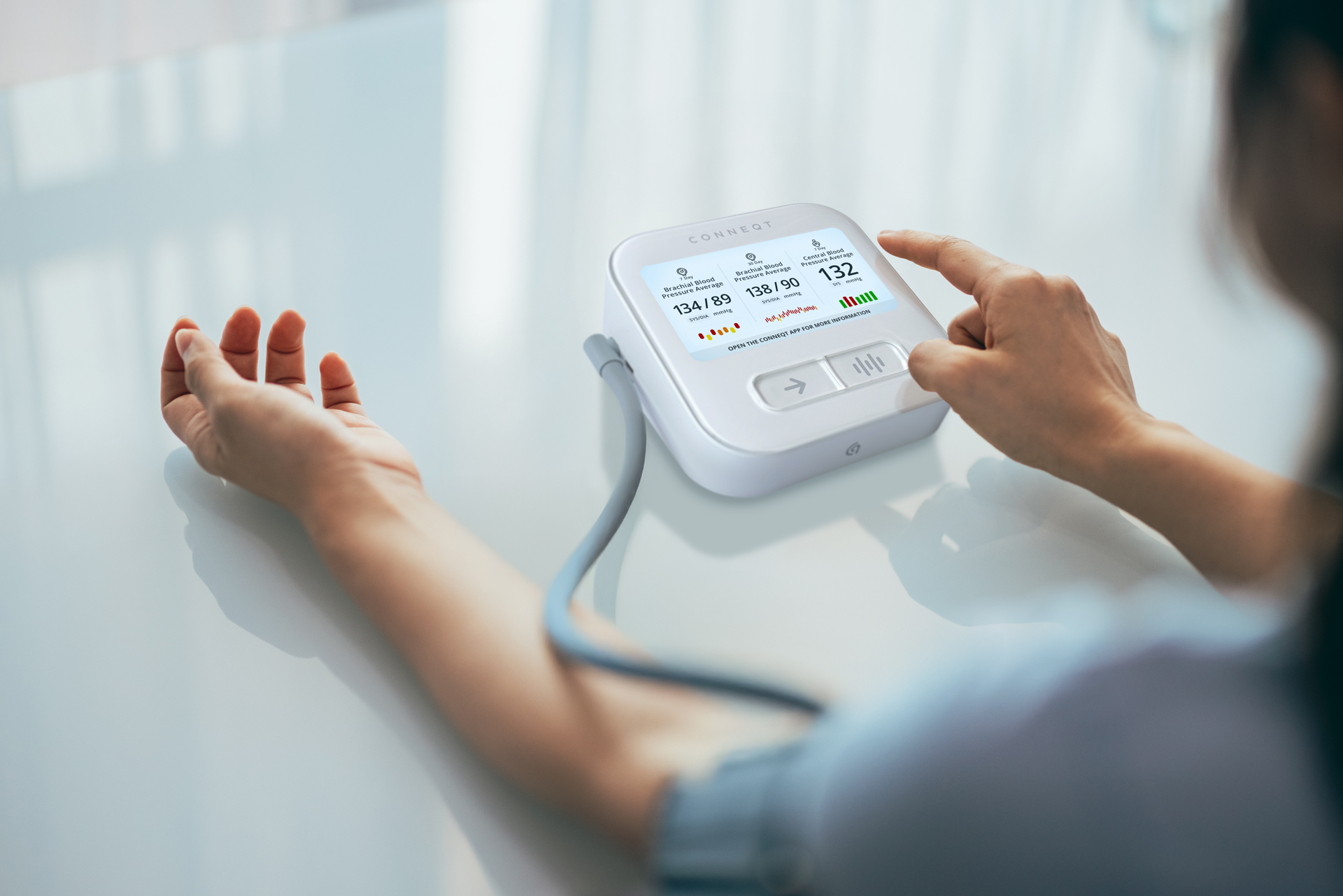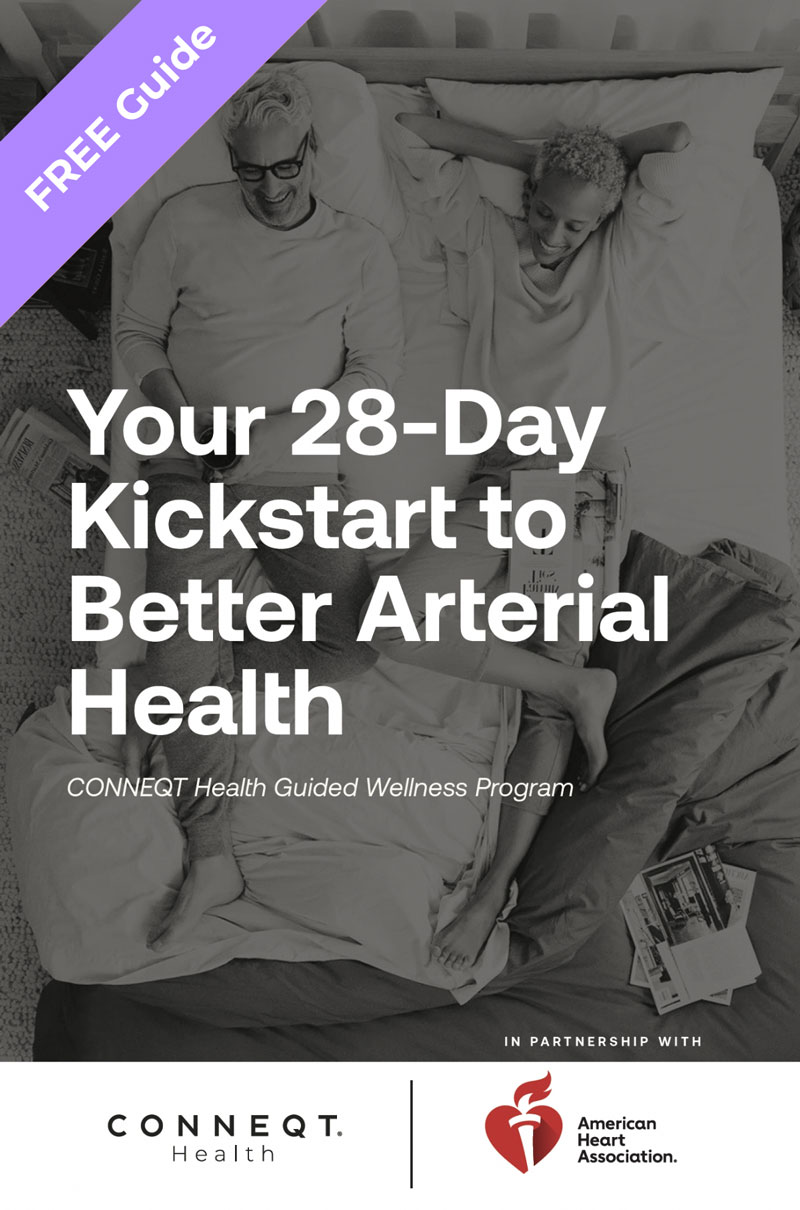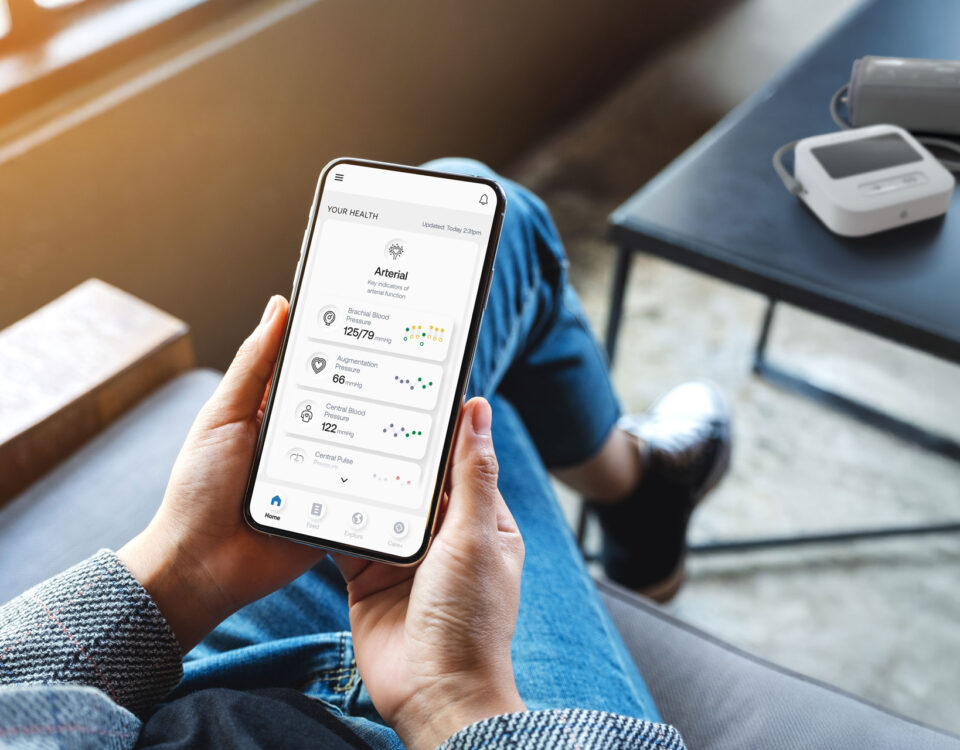You sit down to take your blood pressure reading. One day it’s 128/78. The next, 142/85. Then back to normal. Sound familiar?
If you’ve ever felt confused—or even frustrated—by changing numbers, you’re not alone. But here’s the good news: blood pressure isn’t meant to stay the same all the time. Like heart rate or body temperature, it naturally changes in response to what you’re doing, how you’re feeling, and even the time of day.
As we mark World Hypertension Day, it’s a timely opportunity to demystify those fluctuations—and to highlight how tracking the right type of blood pressure, using the right technique, can help reveal early signs of cardiovascular stress through deeper signals often missed in standard readings.
Let’s take a closer look at why your readings vary and what you can do to better understand what your numbers are really telling you.
Why Blood Pressure Fluctuates
Blood pressure is a dynamic signal that responds to shifts in your nervous system, hormone levels, hydration, and vascular tone. While this natural variability is expected, it’s not something to ignore. In fact, a 2024 cohort study involving over 34,000 adults found that central blood pressure—the pressure closest to the heart—is a stronger predictor of cardiovascular outcomes than brachial pressure measured at the arm. That means even when your arm readings fluctuate, the pressure at the core may be telling a more important story.
Here are some of the most common reasons your numbers might change from one reading to the next:
1. Your Body Follows a Natural Rhythm
Blood pressure tends to rise in the morning, peak during the middle of the day, and lower at night. This circadian rhythm is normal and healthy—unless those daytime peaks are regularly elevated. This rhythm can also shift if you work night shifts, travel across time zones, or have irregular sleep patterns—making it even more important to measure consistently and under similar conditions.
2. Stress and Emotion
Anxiety before a big meeting. Frustration after a difficult conversation. Even the act of taking a measurement when you’re feeling tense can cause blood pressure to rise temporarily. This is your sympathetic nervous system in action—preparing your body to respond to perceived stress.
3. Food, Caffeine, Alcohol, and Exercise
What you consume—and when—can significantly impact your readings. A strong cup of coffee, a heavy meal, a glass of wine, or a workout can all elevate blood pressure for a short period. These effects are temporary, but if you measure without accounting for them, you might misinterpret your results.
4. Medications and Timing
Blood pressure can also fluctuate depending on your medication schedule. Missing a dose, changing your routine, or taking certain over-the-counter products—like cold medicine, NSAIDs, or sleep aids—can all raise your readings. These shifts aren’t necessarily cause for concern, but they’re important to track.
When Accuracy Slips: 8 Common Mistakes That Distort Your Readings
Inconsistent blood pressure readings aren’t always user error—but they’re not always random, either.
In home monitoring studies, including recent data from the Framingham Heart Study, researchers observed that individuals with higher arterial stiffness also had greater variability in their week-to-week blood pressure—even when measurements were taken under ideal conditions. These fluctuations may reflect more than short-term stress or poor technique. Sometimes, they’re early signs that the arteries themselves are beginning to stiffen.
That’s why how you take your readings matters. Even small missteps—like using the wrong cuff size or skipping a rest period—can lead to misleading results. Below are eight of the most common mistakes people make when checking blood pressure at home—and how to avoid them.
1. The Cuff Is Too Tight or Too Loose
A cuff that’s too tight can cause discomfort and artificially raise your blood pressure. Too loose, and your reading may be lower than it should be.
Solution: The cuff should be snug, positioned 1–2 cm above the elbow, and allow two fingers to slip underneath comfortably.
2. You’re Taking It Too Soon
Measuring immediately after physical activity, even light movement like walking or climbing stairs, can elevate your numbers.
Solution: Sit quietly for at least five minutes before you begin. Keep your back supported, feet flat, and arm at heart level.
3. You’re Checking Too Often
Frequent measurements—especially when you’re worried about your numbers—can lead to stress-related spikes and inconsistent trends.
Solution: Choose a consistent time of day, such as first thing in the morning before food, caffeine, or medication. Stick to it.
4. The Equipment Is Faulty or Worn
Worn cuffs, aging inflation systems, or corroded battery terminals can compromise the accuracy of your results.
Solution: Inspect your monitor and cuff regularly for signs of wear, such as cracks in the tubing, weak inflation, or fading Velcro. Replace components as needed to ensure proper function and fit. A well-maintained device is essential for capturing consistent, reliable readings.
5. The Cuff Size Doesn’t Match Your Arm
Using the wrong cuff size is one of the most common reasons for inaccurate readings. A cuff that’s too small can lead to overestimated pressure, while one that’s too large may underestimate it.
Solution: Make sure the cuff fits your arm properly according to the manufacturer’s guidelines. The cuff should wrap evenly around the upper arm without pinching or overlapping excessively. If you’re unsure, consult sizing instructions or speak with your healthcare provider to confirm a good fit.
6. Your Batteries Are Low (or Corroded)
Low battery power or corrosion can interfere with inflation and measurement.
Solution: If your device seems sluggish or inconsistent, check the battery contacts and replace the batteries.
7. You’re Only Taking One Reading
Your first reading is often higher than your true average. This doesn’t necessarily mean your blood pressure is elevated—it may just be your body adjusting.
Solution: Take three readings, spaced one minute apart. If the first is unusually high, discard it and average the last two.
8. You’re Measuring While on Certain Medications
Cold medications, decongestants, NSAIDs, and even sleep aids can temporarily elevate blood pressure.
Solution: Avoid measuring when you’re sick or using over-the-counter medications that raise BP—unless your physician advises otherwise.
It’s Not Just About the Arm Pressure
Most home monitors only measure brachial pressure—the force of blood in the upper arm. That number is useful, but it doesn’t tell the full story.
Central blood pressure, measured in the aorta near the heart, is a more direct reflection of the pressure your organs actually experience. It’s the pressure your heart must overcome to pump blood, and it has a stronger association with cardiovascular outcomes than peripheral readings alone.
That’s why the CONNEQT Pulse goes beyond traditional monitoring. It captures both brachial and central blood pressure, along with key vascular biomarkers that assess arterial stiffness and the heart’s oxygen supply. These insights power the CONNEQT Arterial Health Assessment—a deeper look at your cardiovascular health using clinically validated measures like true blood pressure at the heart (central blood pressure), how stiff your arteries are (augmentation pressure and index), and how well your heart is delivering oxygen (SEVR)—so you can take action before symptoms ever appear.
Unlike arm pressure, central blood pressure can tell you whether your arteries are absorbing pressure efficiently or if stiffness is increasing the load on your heart. In some cases, medications like ACE inhibitors or nitrates lower central blood pressure more effectively than brachial. So if your treatment is working at the heart level but your arm reading still appears high, it doesn’t necessarily mean your plan is failing. It might mean you’re looking in the wrong place.
Central blood pressure gives context—especially when the numbers don’t seem to add up. And for people who appear healthy on the surface but have underlying vascular changes, it can be one of the first indicators that something deeper is going on.
By measuring what matters most, you can catch trends that other devices miss—and take action before risk turns into reality.
How to Take a Reading the Right Way
Even with the most accurate blood pressure monitor, poor technique can lead to skewed results. Following a consistent, evidence-based approach ensures your numbers reflect what’s really going on in your cardiovascular system—not just a reaction to the moment.
Here’s how to take a reliable reading at home:
Before You Start
- Rest first. Sit quietly for at least five minutes before measuring. Your back should be supported, your feet flat on the floor, and your legs uncrossed.
- Avoid stimulants. Wait at least 30 minutes after consuming caffeine, alcohol, or nicotine—or after exercising.
- Empty your bladder. Even mild discomfort can cause a temporary increase in blood pressure.
- Pick a consistent time. Morning is ideal, before food, medication, or coffee. Consistency helps identify true trends over time.
During the Reading
- Use the correct cuff size. A cuff that’s too small may inflate your numbers; too large may deflate them. Check the markings to make sure it fits your arm correctly.
- Place the cuff properly. Position it on bare skin, about 1–2 cm above your elbow. It should be snug, but not constricting—you should be able to fit two fingers underneath.
- Keep your arm supported at heart level. Rest it on a table or cushion, palm facing upward.
- Stay still and silent. Talking, moving, or even minor shifts in posture can affect the reading.
Afterward
- Take three readings. Space them one minute apart. If the first is unusually high, discard it and average the last two for a more accurate picture.
- Track your results. What matters most is the pattern—not a single number. Consistent technique makes your readings more useful for identifying real changes over time.
Taking your blood pressure correctly doesn’t require a clinical setting. But it does require intention. When done properly, home readings can offer powerful insight into your cardiovascular health—especially when paired with an understanding of how and why those numbers can change.
What World Hypertension Day Reminds Us
Nearly half of adults with hypertension don’t know they have it. That’s the core message behind World Hypertension Day: to raise awareness about a condition that often presents no symptoms, yet quietly increases the risk of serious health complications if left unrecognized or untreated.
Elevated pressure—especially central blood pressure—can strain the heart, brain, and kidneys long before symptoms appear. In many cases, signs of vascular stress remain hidden unless you’re measuring beyond the surface. Masked hypertension, where blood pressure appears normal during routine checks but stays elevated in daily life, is more common than many people realize.
Blood pressure variability adds another layer to this picture. Once considered harmless, fluctuations in blood pressure are now linked to increased cardiovascular risk. A 2024 analysis presented at the American Heart Association Scientific Sessions found that individuals with the highest variability had up to a 70% greater risk of sudden cardiac death compared to those with more stable readings.
These risks are real—but they’re also measurable. The CONNEQT Pulse was designed to detect early signs of arterial strain by capturing deeper signals that conventional monitors often miss. By focusing on what’s happening deeper in the arteries, it offers a clearer, earlier view of vascular health and makes it possible to act before symptoms appear.
Understanding your arterial health doesn’t require guesswork. It requires the right lens—and the commitment to track what matters.
Final Takeaway: One Number Doesn’t Define Your Health
If there’s one message to carry forward this World Hypertension Day, it’s this: a single blood pressure reading doesn’t tell the full story. What matters is the trend—how your numbers change over time and what’s happening at the heart, not just the arm.
Day-to-day variation is normal, but sustained shifts in central blood pressure, arterial stiffness, or oxygen supply to the heart can signal that your cardiovascular system is under strain.
That’s why the CONNEQT Pulse was built to move beyond surface-level readings. By capturing central blood pressure, SEVR, augmentation pressure, and other key vascular signals, it provides a more complete picture of how your cardiovascular system is functioning.
These measurements power the CONNEQT Arterial Health Assessment, a comprehensive evaluation that helps you spot early signs of cardiovascular strain and track your progress over time. This deeper, data-driven approach is the foundation of Arterial Intelligence™—a smarter way to monitor your health, understand early risk, and take action before problems develop.
So if your numbers seem inconsistent, ask:
- Was the reading taken correctly?
- Is there a consistent trend over time?
- Could this be pointing to something deeper?
When you measure with intention and the right tools, the numbers stop being confusing—and start becoming meaningful. You’re not just checking your blood pressure. You’re building insight. And that insight helps you take action when it matters most.







